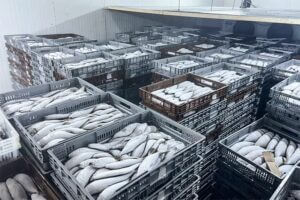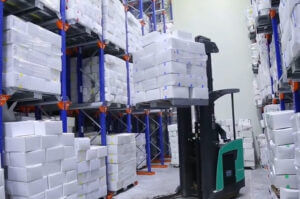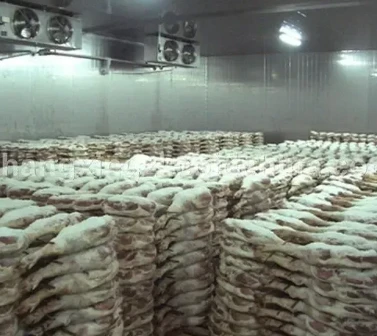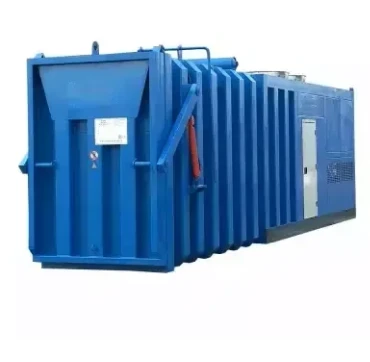Precision Cold Room for Seafood: Freshness Control
In the modern seafood supply chain, ensuring ultimate freshness from ocean to plate hinges upon robust cold room for seafood systems. With a fast-evolving market, advanced manufacturing, and tailored storage solutions, suppliers, processors, and distributors all require precise cold storage for seafood to guarantee product safety, shelf life, and compliance with FDA/ISO standards.

Industry Trends: Growth, Demand, & Technological Upsurge
Global seafood consumption is expected to reach 180 million tons in 2024 (FAO-SOFIA 2024), amplifying the importance of temperature-controlled storage. According to Grandview Research, the cold storage sector for seafood is projected to maintain a 6.9% CAGR through 2027. Key drivers: Stringent food safety regulations (ISO 22000, FDA 21 CFR Part 110) Longer export transit times Demand for premium, sashimi-grade seafood Advance in refrigeration, automation, and IoT monitoring
Technical Parameters: Comparative Overview of Top Cold Room for Seafood Solutions
| Model/Brand | Temp. Range (°C) | Storage Capacity (m3) | Panel Thickness | Refrigerant/Type | Compressor Brand | Certifications | Energy Efficiency | Shelf Life Extension |
|---|---|---|---|---|---|---|---|---|
| Cold Storage for Seafood | -25 ~ +5 | 25–2,000 | 100/150mm PU/steel | R404A/Scroll | Bitzer/Emerson | ISO 22000, CE, FDA | A++ | 10–21 days |
| Blueice VK Pro | -20 ~ +10 | 20–1,500 | 120mm EPS | R507/Scroll | Copeland | ISO 9001/CE | A+ | 7–16 days |
| PolarSafe Seafood | -23 ~ +6 | 30–1,300 | 100mm PU | R404A/Semi-hermetic | Danfoss | CE, NSF | A | 8–18 days |
| Arctico FSX | -25 ~ +7 | 18–1,200 | 100/150mm PIR | R448A/Scroll | Emerson | FDA, UL | A++ | 9–20 days |

Manufacturing Process Flow: Cold Room for Seafood
Step-by-Step Technical Workflow
Process Note: Every cold room for seafood is subjected to airtightness and thermal cycling checks in strict compliance with FDA and ISO/IEC 17025 laboratory protocols.
Material, Technology, and Technical Advantages
- Panel Material: Food-grade stainless steel (AISI 304/316), coated galvanized, or anti-bacterial plastics; core insulation: rigid polyurethane (PU, λ≤0.021W/mK), PIR for high fire safety.
- Manufacturing Techniques: CNC precision cutting, robotic welding, high-pressure polyurethane injection, automated surface coating line for anti-corrosion.
- Testing & Certification: Factory tests per ISO 22000, ANSI/ASHRAE 72, UL, CE, FDA; performance logs available upon request.
- Service Life: >15 years for panels and equipment, 5-year compressor warranty (Bitzer/Emerson certified partners), maintenance-free door gaskets for 10 years.
- Industries Served: Fisheries, Aquaculture, Processing Plants, Restaurants, Exporter Hubs, Port Cold Chains, Marine Logistics.
- Key Application Benefits: Extreme energy savings (up to 45% vs. old models) Corrosion-proof, long-shelf performance Remote real-time temperature/alarm monitoring (IoT module optional) Complies to FDA, ISO, CE, NSF international standards

Key Technical Indices: Cold Storage for Seafood
| Parameter | Specification | Test Standard |
|---|---|---|
| Temperature Uniformity | ±0.5°C (entire room) | ISO 22000 / FDA / NSF |
| Panel Thermal Conductivity (λ) | ≤0.021 W/mK | EN 14509 |
| Panel Density | ≥43 kg/m³ (PU), ≥42 kg/m³ (PIR) | GB/T 18445 |
| Compressor Efficiency | A++ rated | AHRI 540 |
| Anti-corrosion Cycles | ≥2,000 hours salt spray | ASTM B117 |
| Door Sealing | ≤0.1% air exchange/h | ANSI/ASHRAE 72 |
| Noise Level | ≤48 dB(A) | ISO 3744 |
Practical Applications & Project Cases
- Scenario: 900m³ Cold Storage for Salmon Export
- Features: -24°C~+4°C, Wi-Fi temperature loggers, Bitzer parallel compressors
- Outcome: Product shelf-life improved by 6 days. Reported 39% decrease in energy bills in Q1 after install.
- Scenario: 3,400m³ custom cold room for seafood for shrimp and crab
- Features: IoT live monitoring, rapid freezing tunnel, anti-bac panels
- Outcome: 200+ tons/month volume, temperature violations reduced to zero; certified by local CDC for hygiene.
- Scenario: Modular cold storage for 23 outlets (10~50m³/unit)
- Features: Plug n’ play scroll system, mobile alert module
- Outcome: Food wastage cut by 25%; positive diner feedback on fish quality.

Leading Vendors Compared (2024)
| Vendor | Main Strength | Certifications | Service Coverage | Warranty |
|---|---|---|---|---|
| XX Cold Storage | Highly customized, rapid delivery, global install team | ISO 22000, FDA, AHRI, CE, UL | Global | 15 years structure, 5 years compressor |
| Arctico | Energy optimization & large scale | CE, FDA | Asia, Europe | 10/4 yrs |
| PolarSafe | Retail & seafood processing chain | NSF, CE | Europe, USA | 8/3 yrs |
| Blueice | Small quick-freeze solutions | ISO 9001 | Asia, MEA | 7/2 yrs |
Custom Cold Room for Seafood: Options & Engineering
- Room Size: 10m³–3,500m³ (walk-in, modular panels, custom layout)
- Temperature Range: -30°C (blast freezing) to +10°C (chill holding)
- Door Options: Sliding, automatic, quick-roll, anti-condensation
- Floor: Anti-slip, heavy-load, food-grade resin, anti-bac epoxy
- Sensors: RFID, Wi-Fi, data logger, panic alarm
- IoT/SCADA: Optional real-time monitoring & cloud analytics
- Power Backup: Generator ready, smart control panels
- Design Standard: HACCP, ISO 22000, FDA 21 CFR
Order & Delivery Process
- Consultation & Needs Analysis: Site checks/online 3D design.
- Technical Plan & Quotation: CAD drawings, parameter confirmation, 3D rendering.
- Contracting: ISO 20000-compliant documentation.
- Manufacturing: 7–35 days (size/configuration dependent)
- Pre-shipment QC & Packaging: Photos, reports, ISO 9001 log available.
- Shipping & Installation: 5–30 days transit; global-tech team deploys in 1–8 days/site.
- Acceptance & Training: Operational handover, maintenance guide, online/onsite support.
Warranty, Support, & Quality Commitment
- Structure Warranty: 15 years (panels, doors, floors)
- Compressor Warranty: 5 years (Bitzer, Emerson)
- Remote Support: 24/7 online troubleshooting, IoT diagnostics
- Onsite Support: 48-hour response in 30+ countries
- Parts Supply: Guaranteed availability for 10 years
- Documentation: All products delivered with ISO 22000, FDA, CE, and QC certificates
- Optional: Annual inspection contract, energy optimization upgrades
Expert FAQ: Cold Room for Seafood Technology
- 1. What are the typical materials used in cold storage for seafood panels?
- Premium insulated sandwich panels with food-grade stainless steel skin (AISI 304/316) and rigid polyurethane or polyisocyanurate (PIR) as core. This ensures maximum hygiene and thermal performance (λ≤0.021W/mK).
- 2. What is the required temperature range to preserve seafood freshness?
- -25°C to +5°C for most seafood. Sashimi/sushi-grade tuna may require blast freezing at -30°C. Parameters certified according to FDA and EU food storage guidelines.
- 3. How is thermal insulation measured?
- Thermal efficiency is quantified by K-value or λ (W/mK). Lower λ means better insulation. Our panels: λ≤0.021W/mK, tested per EN 14509.
- 4. Are your cold rooms compliant with international standards?
- All units certified to ISO 22000 (food safety), CE, FDA 21CFR, and pass ANSI/ASHRAE 72 airtightness benchmarks. Documentation is provided with each delivery.
- 5. What installation requirements should clients consider?
- Level concrete base, 3-phase power supply (380/400V), clearance for air movement, and access for equipment moving. Install time for typical seafood store: 1–6 days (depending on size/configuration).
- 6. What are typical compressor brands used in cold room for seafood?
- Bitzer, Emerson (Copeland/ZB), Danfoss and Tecumseh are the most reliable. All are international brands with authorized after-sales support.
- 7. What quality assurance and testing do you provide?
- Each system undergoes thermal cycling, pressure leak, salt spray, and control panel tests per ISO/IEC 17025. QC logs and video inspection available upon request.
Why Choose Cold Storage for Seafood from XX Coldroom?
- Industry-leading panel technology—certified to ISO, FDA, CE/UL standards
- Highly customizable dimensions, layouts, and accessories
- Rapid delivery (30% faster than industry average per client survey 2023)
- Track record: Over 1,500 successful global seafood projects
- Official supplier for several Fortune 500 F&B clients
Summary: The Future of Cold Room for Seafood
Investments in cold room for seafood technology guarantee freshness, safety, and bottom-line savings in a high-demand, increasingly regulated global market. Engineering advances in insulation, automation, and modular assembly have shrunk operating costs while significantly extending shelf life. Leaders deploy end-to-end solutions backed by international certifications, data-driven engineering, and around-the-clock technical support.
[1] FAO: The State of World Fisheries and Aquaculture 2024
[2] Grand View Research – Global Cold Chain Market Report 2024
[3] John, L et al. "Quality Assurance in Seafood Cold Storage," Journal of Food Processing and Preservation, 2023 (Wiley)
[4] Refrigeration Engineer Forum: Best Practices for Seafood Cold Rooms
[5] "Cold Chain Logistics for Seafood," SeafoodSource, 2023
















































































































